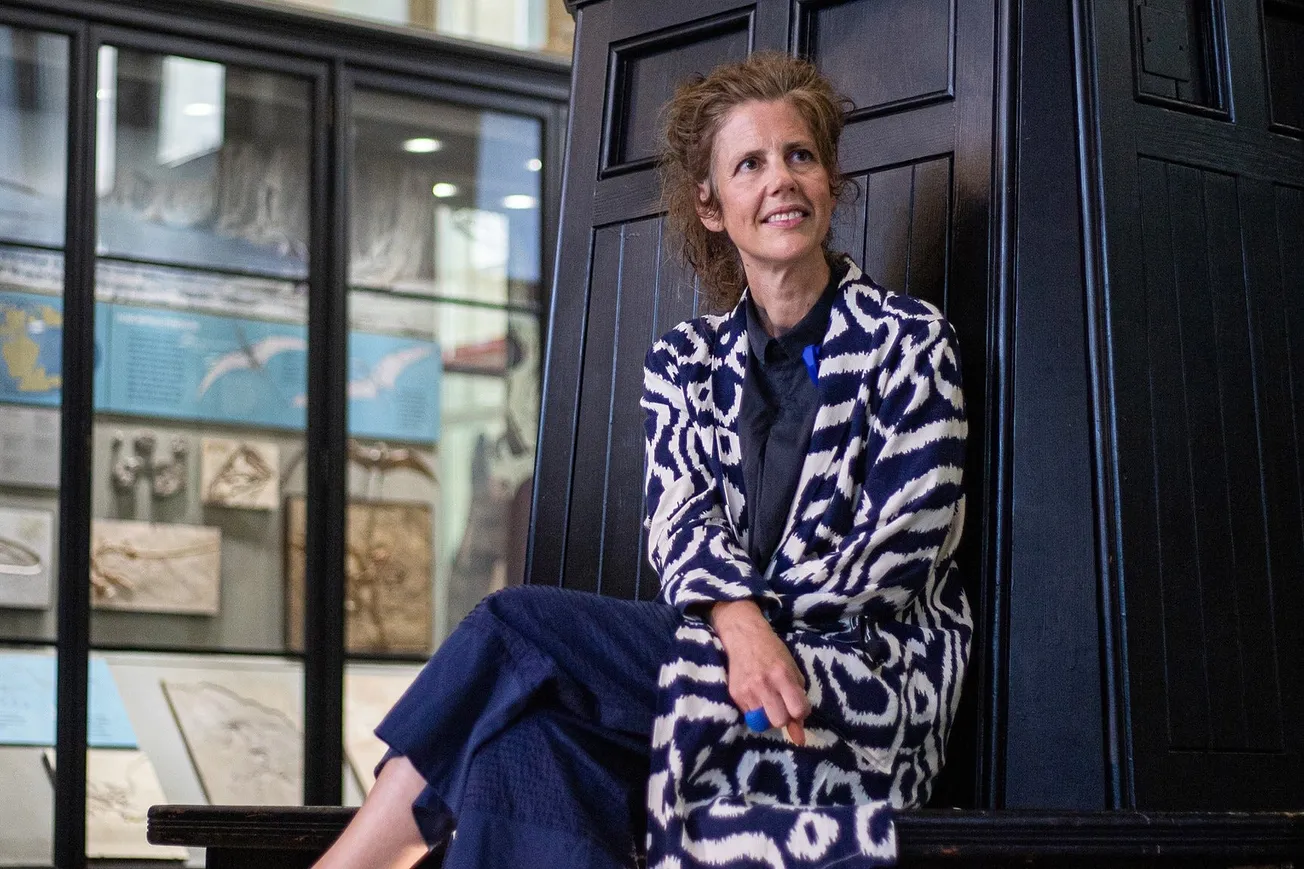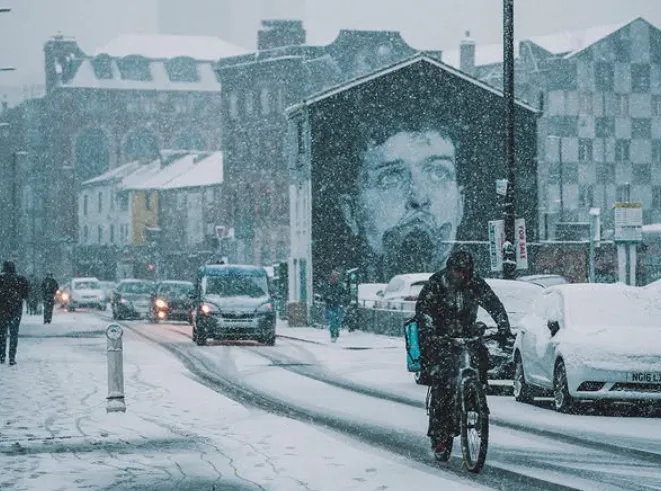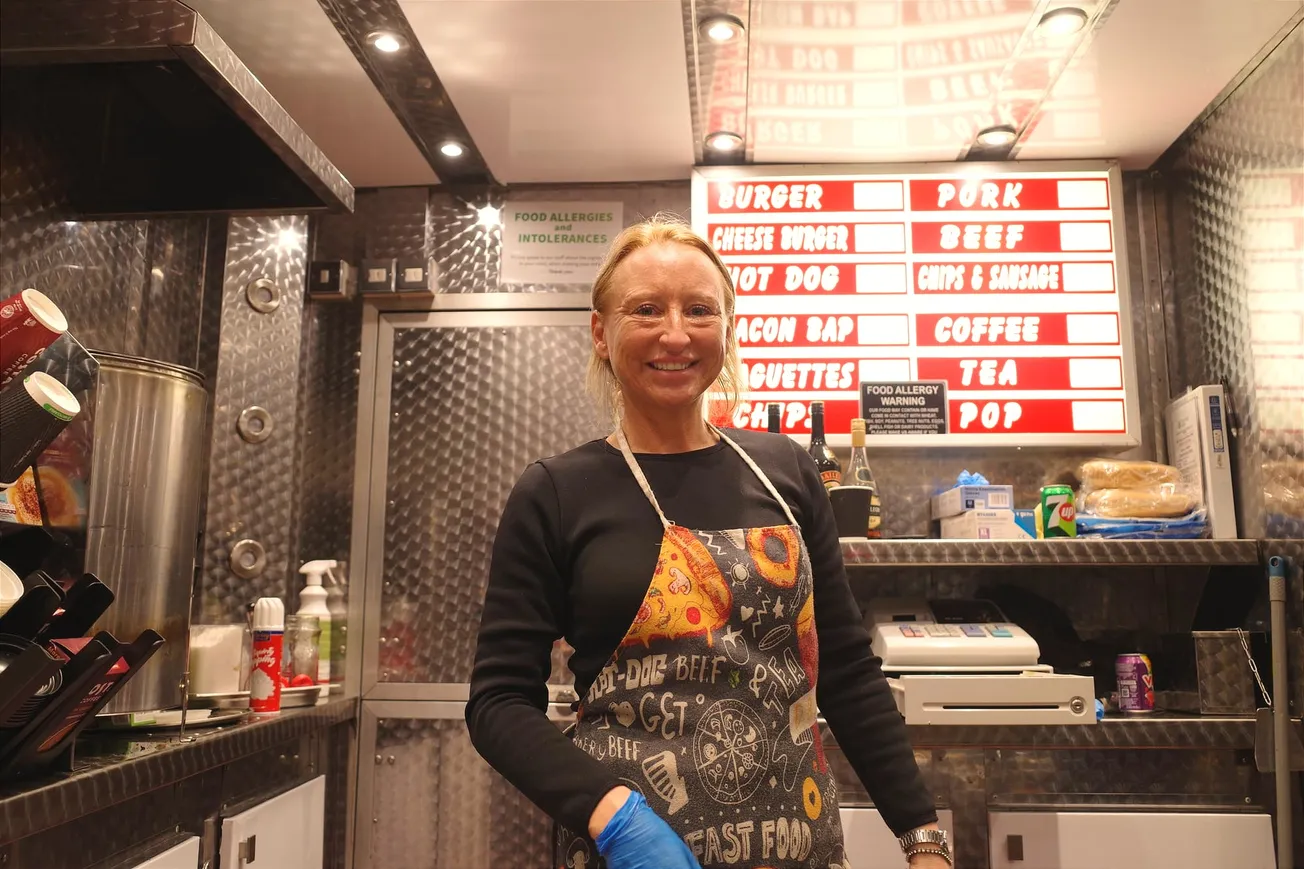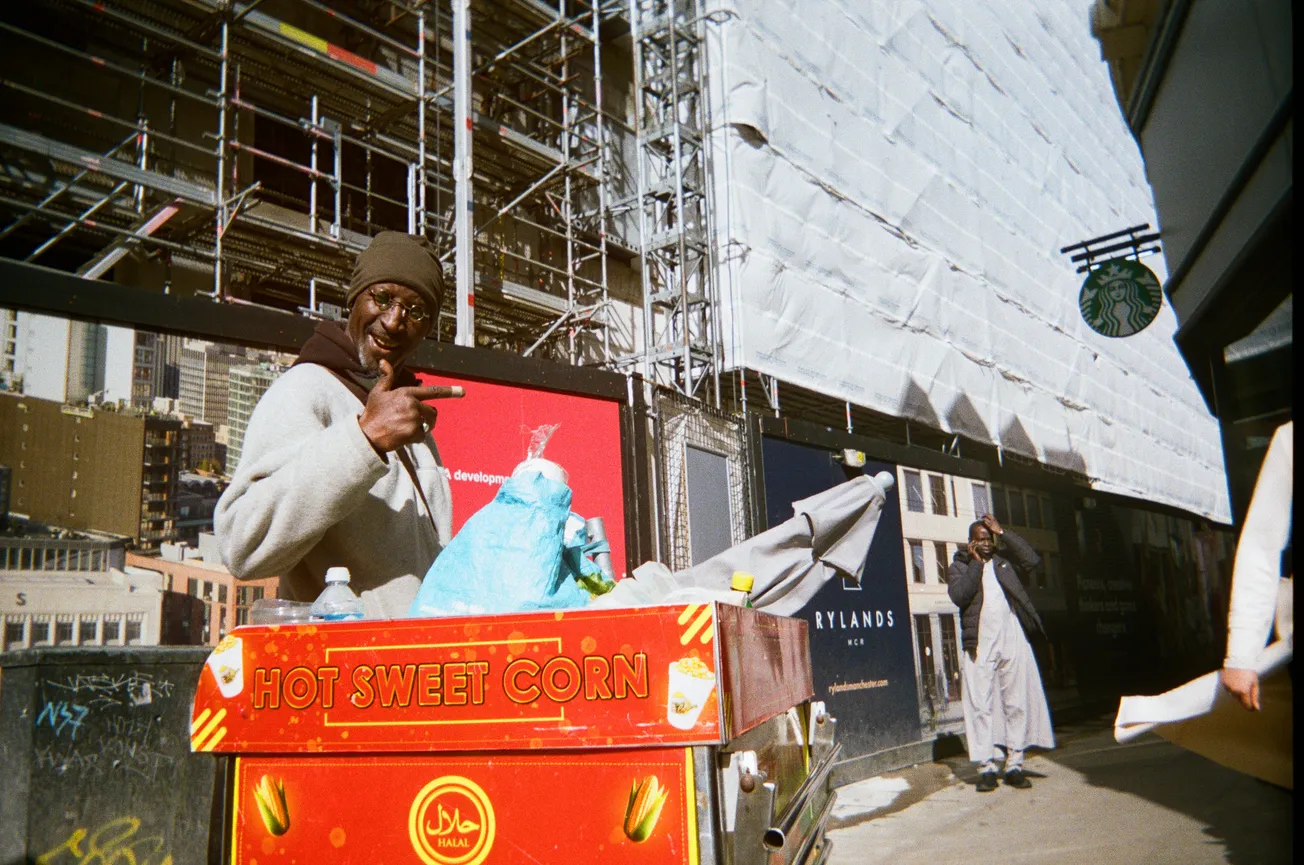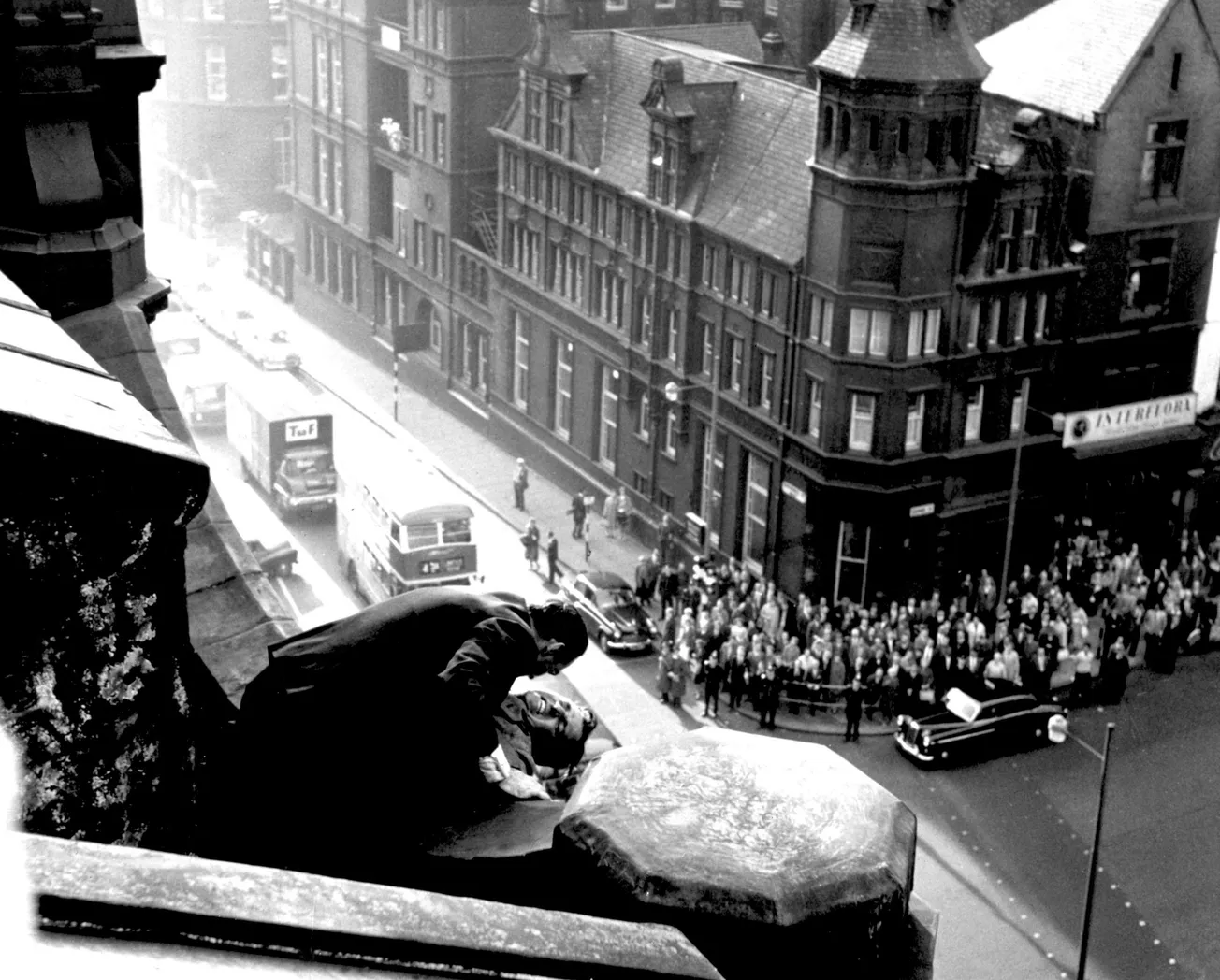By Joshi Herrmann
“Let’s not beat around the bush, this is a museum born of empire,” says Esme Ward as we walk between two of Manchester Museum’s brand-new galleries dedicated to Chinese and South Asian cultures respectively. “Lots of the material we have has been extracted from those countries.”
Ward is the director of the museum and has been overseeing its enormous £15 million renovation, which has seen it closed for around 18 months and not fully open for five years. Reopened to the public this morning, it has a two-storey extension, a new entrance, a new dinosaur display and the first chance to see the museum’s blockbuster Golden Mummies of Egypt show in the new Exhibition Hall. I’m told that around a third of the objects at the museum are newly displayed – either brought up from the vast storage rooms or newly acquired or commissioned – and of course there are new frogs in the upstairs vivarium who have, as many Millers will know, bred or migrated here during the pandemic.

But the reason Ward brings up empire so early in our conversation is that this is an intensely political time to be running a major museum, especially if you have been given the once-in-a-generation chance to rethink what it displays. Everyone knows that the arts world has gone through a major reckoning over its collections and its colonial roots in recent years, in what has often felt like an important period of self-reflection and has at other times exhibited the blind panic and incoherence of a nervous breakdown. “Decolonisation” might sound like academic jargon to many people, but to the curators whose collections derive from Victorian times (i.e., most of them), it both preoccupies huge amounts of their thinking and poses an existential question about the institutions they run. If Manchester Museum was fully decolonised, would it be left with much more than a handful of croaking toads?
Oh, and if that wasn’t enough politics for Ward to consider, let’s throw China into the mix. The new Lee Kai Hung Chinese Culture Gallery, named after a leading Chinese-British businessman in Manchester and dedicated to fostering cultural connections, is where my chat with Ward began when we met on Thursday. The gallery is a collaboration with the Manchester China Institute at the University of Manchester, which “promotes mutual understanding in UK-China relations”. But Ward is keen to point out that this is not a gallery about China, an important distinction that is made again when I speak to Bryan Sitch, the museum’s deputy head of collections, who oversaw this bit of the revamp.

"This is very clearly a gallery that is about people in China and people in Manchester,” says Ward, deploying words that sound like they have been honed with the help of a PR team and hundreds of repetitions, and explaining that the focus on people was about creating a space that fosters understanding rather than highlighting conflicts. Important context here: Manchester Museum is part of the University of Manchester, an organisation whose finances are exceptionally reliant on the fees paid by tens of thousands of Chinese students.
I stand looking at a Chinese display cabinet covered with carved scenes showing the story of the white snake – an important old tale about a demon who came to earth disguised as a young woman. It’s a beautiful piece, but like a lot of the exhibits in this new gallery, it feels much less contemporary than the South Asia gallery next door; much more careful and less willing to grapple with modern day issues.
The sense that the gallery was pulling its punches when it put together these displays is almost as visible behind the glass cabinets as the objects themselves – why is there no mention of the violent attack on a peaceful protester by staff at the Chinese consulate last year, for example? Or Xi Jinping’s visit to the city in 2015 — a seminal moment in the city’s unusually close relationship with China. “We are not going to shy away from our imperial past or what is going on in China,” Ward tells me, and her colleague Sitch denies that anything here was censored by the consulate or the Manchester China Institute for that matter. "No not at all,” he says. “We are funded separately, we sought their advice on things but at no point has anyone said to us that you can't or shouldn't tell that story."

It’s part of why the re-opening of the museum is so fascinating. We’ve got modern geopolitics, imperial history, unusual-looking Egyptian mummies and a team of curators who are trying to re-imagine what a museum is actually for, with a focus on making it representative of 21st century Greater Manchester. How successfully have they walked all those tightropes?
The best answers to those questions will emerge in the weeks and months ahead as people stream through the new doors. Who cares what The Mill thinks about a museum compared to what millions of families from across the North make of it? But having spent a few hours there interviewing the key figures, and then another few hours at the opening drinks reception on Thursday evening, I had some initial thoughts.
The first thing I heard when entering the reception was a poem about colonisation and empire being read out from the steps of the dinosaur hall. “Equality, diversity, inclusion,” were among the words I managed to note down. Is that the kind of language you are going to find on every plaque of the remodelled Manchester Museum? I wondered if it might be, but that doesn’t seem to be how Ward and her team have gone about this. To me at least, their attempts to reframe British history through their displays don’t come across as stern or hectoring — mostly because there is just so much fun here; so much colour and energy.

I’m thinking primarily of the South Asia gallery, which has been produced in collaboration with the British Museum, and is an absolute joy. The gallery was co-curated with a large group of Mancunians of South Asian heritage, and it’s presented as a series of personal stories or vignettes rather than trying to be a comprehensive history of the continent or its diaspora. Alongside the usual kind of stuff you might expect to find here (there’s a cabinet about Gandhi's visits to Darwen and Bolton in the 1930s, for example, and a cabinet about Satyendra Nath Bose, one of the founders of modern quantum science), there’s a spectacularly decorated rickshaw that has been commissioned for this space – imported from Bangladesh and painted by artists in Manchester, who have included Mancunian and Bangladeshi motifs on the back.
There’s a must-see portrait of a woman sitting in a chair by the painter Azraa Motala and an immersive film shot by Manchester-based visual artist Alina Akbar, whose beautiful footage carries us from local parks to fast food shops to fields where men in traditional dress are training their horses. “It just speaks so viscerally to our experiences – the music, the culture,” a young man tells me as we watch the film. I’ve grabbed him because I saw him and his friend watching another exhibit – a 1988 news report about the craze of Bhangra discos. In the report, two young men in black tie suits are checking themselves out in a bathroom window, one of them combing his hair in preparation for a big night out.
“That's me and you!” the young man says to his friend just in front of me. “Imagine how lit that would have been!” His mate, who is watching the video, takes off his headphones and whips out a comb from his back pocket in imitation of the scene on the screen, and both men laugh. Of course, the way in which museum galleries are received changes from day to day, perhaps hour to hour. I was in the South Asia gallery on its opening night and the crowds there were people who had been specifically invited. Perhaps on a Sunday afternoon when fewer people are here, these exhibits wouldn’t feel like they are conducting jolts of energy into the people witnessing them. But that’s how it felt when I saw it, like the new gallery was sparking something in its visitors – recognition, yes, but also delight. “I left feeling energised!” said my girlfriend when we talked about it later.

Ward would presumably count that reaction as a triumph. The idea for the new gallery came from a realisation that many people from Greater Manchester’s South Asian communities didn’t feel like they could relate to the previous iteration of their city’s museum, and Ward says that’s why she chose the approach of having non-museum professionals take a leading role in designing this gallery. “It’s about becoming the museum the city needs,” she told me as she showed me around.
I’ve written 2,000 words without saying much about the toads, who I’m told had a “good pandemic” and are flourishing, or the exceptionally beautiful and moving display of mummies and their accompanying portraits, described by the Guardian’s art critic this week as “simply some of the most stunning works of art that survive from the ancient world”. Both of those sections of the museum justify a visit on their own. I’ve focused on the more challenging new exhibits because for me, they come closest to the task Ward set herself of creating the museum Manchester needs.
One might be more successful than the other, but the Chinese and South Asian galleries represent an important moment for Greater Manchester — they are official acknowledgements of communities who are central to this city region; their stories — even when imperfectly or cautiously told, perhaps more so because of that — are stories about who we are. When I left on Thursday night, I had many thoughts and feelings about what I had seen, chief among them that the reborn Manchester Museum has made itself unmissable.
The museum re-opens to the public at 10am — it is free to enter and no booking is required.

Comments
How to comment:
If you are already a member,
click here to sign in
and leave a comment.
If you aren't a member,
sign up here
to be able to leave a comment.
To add your photo, click here to create a profile on Gravatar.

